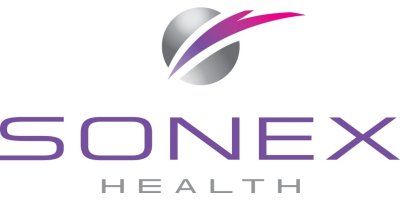

- Home
- Companies
- Sonex Health Inc.
- News
- Sonex Health Announces Successful ...
Sonex Health Announces Successful Completion of The First Trigger Finger Release Procedures using Ultraguidetfr™ and Real-Time Ultrasound Guidance
Sonex Health today announced the first trigger finger release (TFR) procedures in the United States performed using real-time ultrasound guidance with the Sonex Health UltraGuideTFR device. “Trigger finger” syndrome is the common name for stenosing tenosynovitis, a painful condition caused by a progressive restriction of normal tendon motion by the A1 pulley, interfering with the ability to bend and straighten the fingers. The first patients treated with UltraGuideTFR are part of a limited market release which includes 10 physicians who will perform approximately 100 TFR procedures using real-time ultrasound guidance. Full commercial launch of UltraGuideTFR is expected to begin in March of this year.
UltraGuideTFR is a hand-held device developed by the physician co-founders of Sonex Health, both of whom previously practiced at The Mayo Clinic. The device is indicated for the treatment of trigger finger by incising the tendon sheath and A1 pulley, and as needed part of the A2 pulley. UltraGuideTFR is designed to perform TFR under real-time ultrasound guidance through a single incision. Real-time ultrasound guidance allows treating physicians to visualize the critical anatomy prior to and during transection, as well as probe the pulley and tendon sheath to document an adequate release.
Previous studies of TFR procedures using ultrasound guidance have shown they can be performed in procedure rooms or office settings utilizing local anesthesia and have been associated with reduced pain and rapid recovery.1-3 Most patients are able to return to work and normal activities faster than those who undergo traditional TFR surgery.3
“The launch of UltraGuideTFR reflects our continued commitment to provide safe and effective ways to treat common painful upper extremity conditions. Our devices, which harness the power of ultrasound guidance, are designed to improve the patient experience by reducing invasiveness and lowering the cost of quality care,” said Sonex Health CEO Bob Paulson.
These first procedures with UltraGuideTFR were performed at Agensian Plastic Surgery in Fond du Lac, WI by Richard Schaefer, MD and at Essentia Health in Duluth, MN by Douglas Hoffman, MD, supported by Samuel Hoxie, MD. Both facilities have significant experience using ultrasound guidance to treat carpal tunnel syndrome with Sonex’s first commercial technology, UltraGuideCTR™.
“Real-time ultrasound guidance allows us to see all critical anatomy prior to making an incision and enables us to guide the device while performing the procedure through a much smaller incision. Because this technique is less invasive, patients recover sooner and return to their normal activities and jobs much faster than following traditional surgical TFR procedures,” said Dr. Schaefer.
Dr. Hoffman added, “Trigger finger can interfere with daily life, especially for those people who rely on using their hands for their livelihoods. Using ultrasound guidance, I can perform TFR procedures in my office under local anesthesia. Patients really appreciate the convenience of avoiding the operating room for this procedure.”
Trigger finger syndrome affects almost nine million Americans and results in 350,000 surgeries every year. While a traditional surgery to treat TFR can remedy the condition, the surgery may result in large, and sometimes painful scars and a long recovery.3 TFR procedures using ultrasound guidance can be performed through a small incision which can typically be closed with an adhesive strip or bandage instead of sutures.
